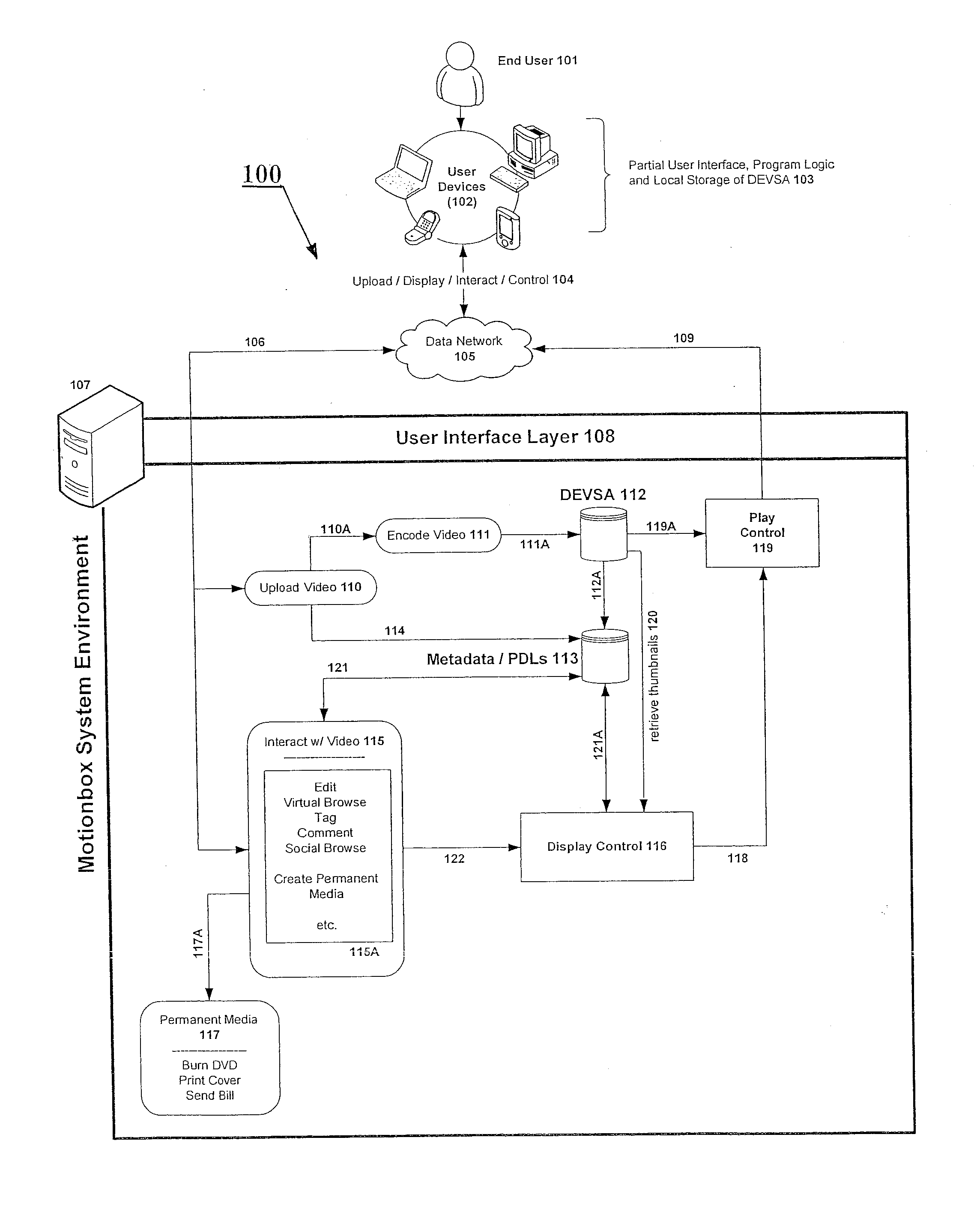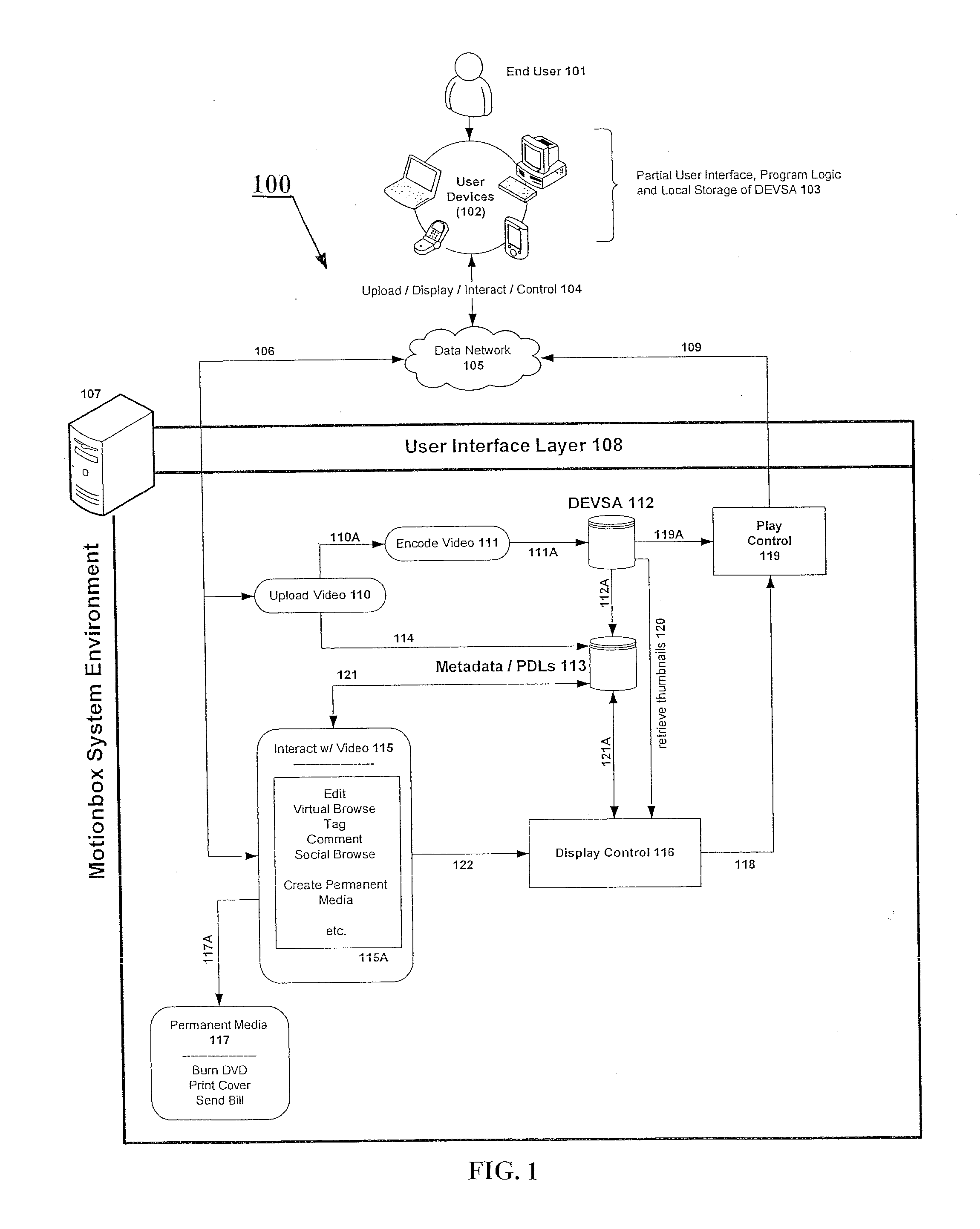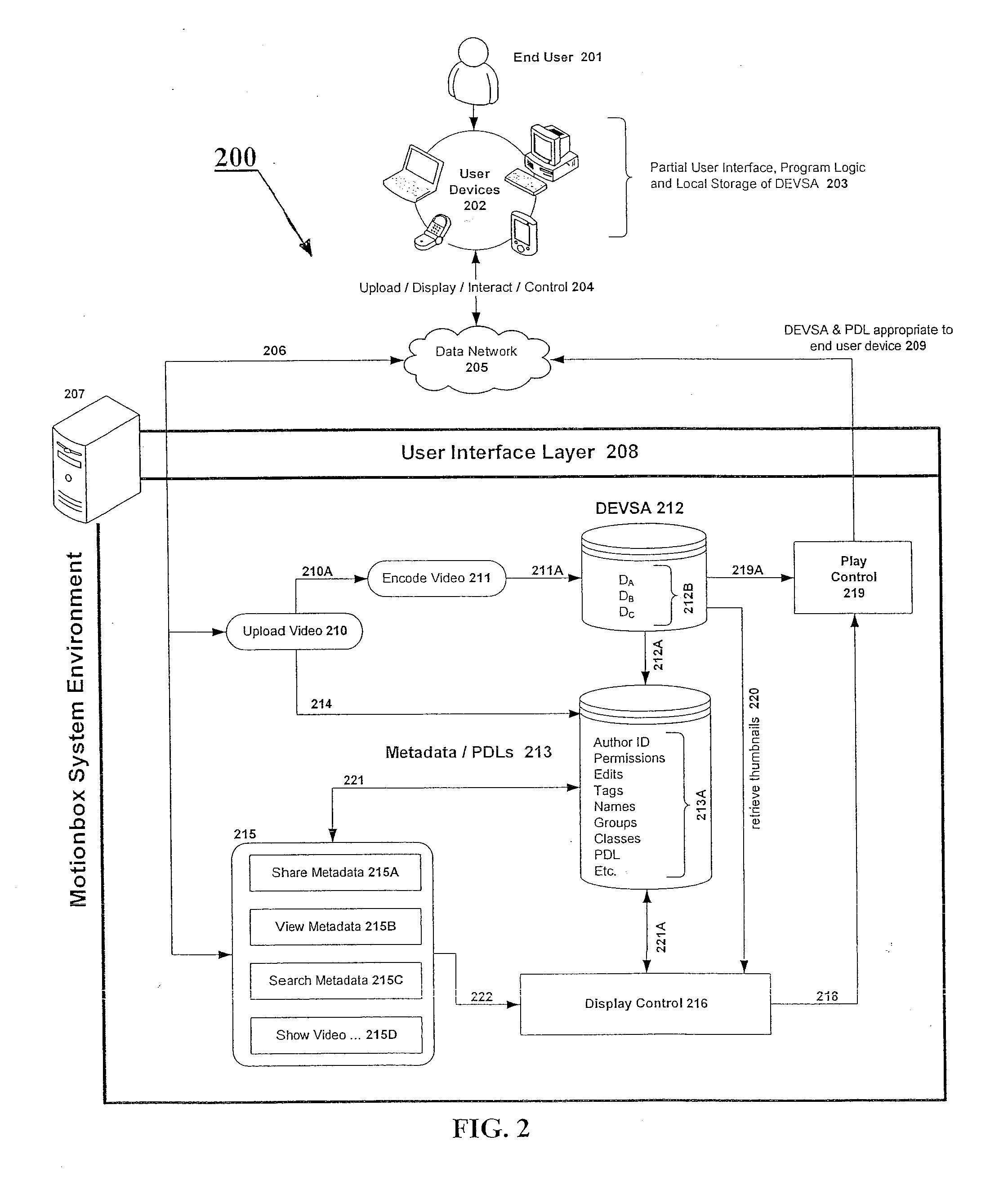Consumers are shooting more and more personal video using camera phones, webcams, digital cameras, camcorders and other devices, but consumers are typically neither skilled videographers nor are they able or willing to learn complex, traditional
video editing and
processing tools like Apple iMovie or Windows Movie Maker.
Nor are most users willing to watch most video “VCR-style”, that is, in a steady steam of unedited, undirected, unlabeled video.
Thus consumers are being faced with a problem that will be exacerbated as both the number of videos shot and the length of those videos grows (supported by increased
processing speeds, memory and bandwidth in end-user devices such as
cell phones and digital cameras) while the
usability of editing tools lags behind.
The result will be more and longer video files whose
usability will continue to be limited by the inability to locate, access,
label, discuss and share granular sub-segments of interest within the longer videos in an overall
library of videos.
In the absence of editing tools for the videos, adding titles and comments to the videos as a whole does not adequately address the difficulties within the present technology as will become aware to those of skill in the art who recognize the technological challenges illustrated herein after reviewing the instant discussion.
A special problem, recognizable by those of skill in the art, is that distinct viewers may find distinct 15-second intervals of interest.
The reciprocal challenge is for users to help each other find those interesting segments of video.
Due to the time-based nature of the video, expressing interest levels, entering and tracking comments and / or tags or labels on subsegments in time of the video or other time-based media is a unique and previously unsolved problem.
A further challenge is that
video processing uses a lot of computer power and special hardware often not found on personal computers.
Consumers have been limited to editing and sharing video that they could actually get onto their computers, which requires the right kind of hardware to
handle their own video and also requires physical movement of media and encoding if they wish to use video shot by another person or is taken from stock libraries.
When coupled with the special complexities of digitally encoded video with synchronized audio the requirements for special hardware, difficult
processing and storage demands combine to reverse the common notion of using “free desktop MIPS and GBs” to relieve central servers.
Unfortunately, for video review and editing the desktop is just is not enough for most users.
The
cell phone is certainly not enough, nor is the personal digital assistant (PDA).
Techniques (editing, revising, compaction, etc.) previously applied to these other forms of data types cannot be reasonably extended due to the complexity of the DEVSA data, and if commonly known forceful extensions are orchestrated, they wouldBe ineffective in meeting users' objectives and / orBe economically infeasible for non-professional users and / orMake the so-rendered DEVSA data effectively inoperable in a commercially realistic manner.
Therefore a person skilled in the art of text or photo processing cannot easily extend the techniques that person knows to DEVSA.
As will be discussed herein the demonstrated state-of-the-art in DEVSA processing suffers from a variety of existing, fundamental challenges associated with known DEVSA
data operations.
These challenges affect not only the ability to manipulate the DEVSA itself but also to manipulate associated
metadata linked to the internals of the DEVSA.
This application does not address new techniques for digitally encoding video and / or audio or for decoding DEVSA.
The difficulty in dealing with mere two dimensional photo technology is therefore so fundamentally different as to have no bearing on the present discussion (even more lacking are text art solutions).
To date no viable solutions have been provided which are accessible to the typical
consumer, other than very basic functions such as storing pre-encoded video files, manipulating those as fixed files, and executing START and STOP play commands such as those on a
video tape recorder.
As has been shown, for example in surveillance applications, this is a highly valuable technology but it completely fails to address the present needs.b. It is not possible to take a “snapshot” of audio as it is perceived by a person.
Due the complex encoding and encodation techniques employed, those files cannot be disrupted or manipulated without a severe risk to the inherent stability of the underlying video and audio content.
 Login to View More
Login to View More  Login to View More
Login to View More 


